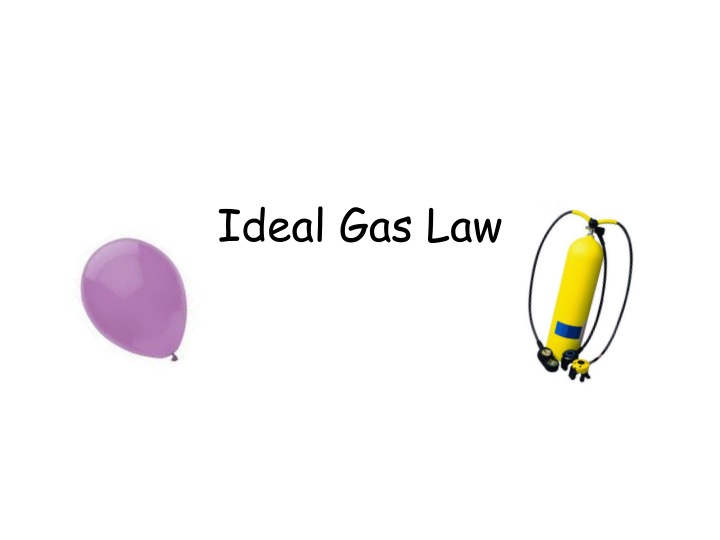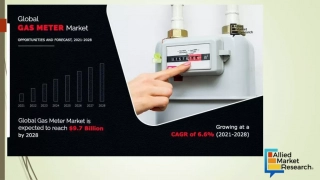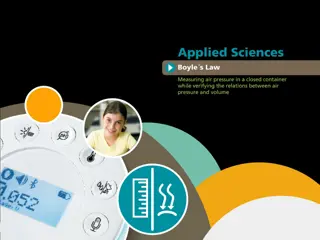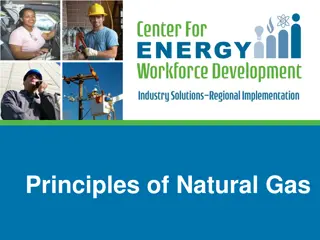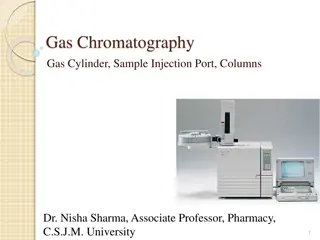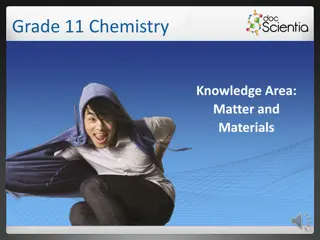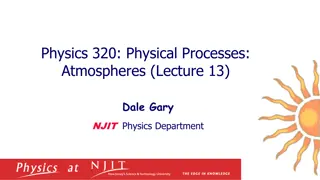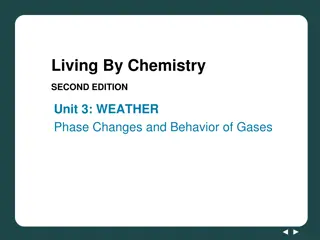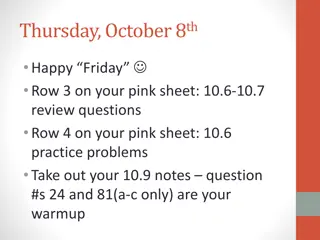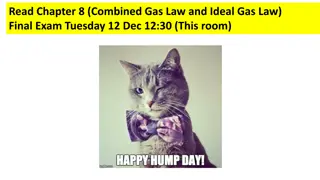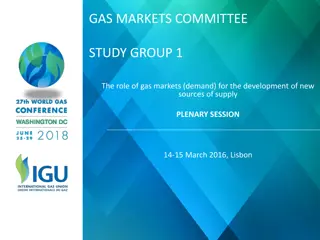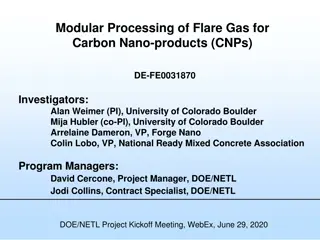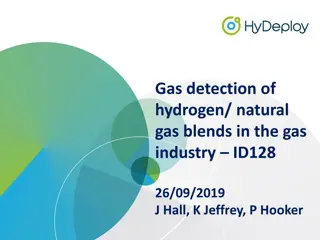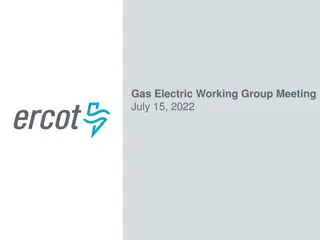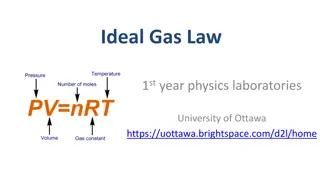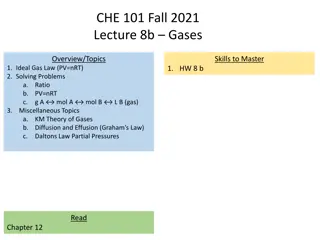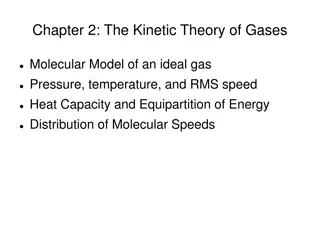Ideal Gas Law
The ideal gas law describes the relationship between the temperature, pressure, volume, and amount of gas in a sample. With the gas constant, you can solve various gas law problems and understand concepts like effusion. Explore how to apply the ideal gas law in real-world scenarios and grasp the principles behind gas behavior.
Uploaded on Mar 07, 2025 | 0 Views
Download Presentation

Please find below an Image/Link to download the presentation.
The content on the website is provided AS IS for your information and personal use only. It may not be sold, licensed, or shared on other websites without obtaining consent from the author.If you encounter any issues during the download, it is possible that the publisher has removed the file from their server.
You are allowed to download the files provided on this website for personal or commercial use, subject to the condition that they are used lawfully. All files are the property of their respective owners.
The content on the website is provided AS IS for your information and personal use only. It may not be sold, licensed, or shared on other websites without obtaining consent from the author.
E N D
Presentation Transcript
Describing a sample of a gas 4 variables are needed to completely describe a sample of a gas: Temperature Pressure Volume Amount (number of moles) of gas
Gas Constant At STP 1 mole of any gas has a volume equal to 22.4 L So if you have 1.0 moles (number of moles), V= 22.4 L T = 0oC or 273K P = 1 atm PV = 0.0821 Liter Atm = R Tn Mole K
Ideal Gas Law PV = R Multiply both sides by Tn Tn PV = nRT where R is the ideal gas law constant. If three of the variables are known, the 4th can be determined. The units of R depend on the units used for P, T, and V.
Units of R Two common values of R: 0.0821 Liter Atm Mole K 8.31 Liter KPa Mole K
Problem-Solving Most commonly used value of R: 0.0821 Liter Atm Mole K Note: Pressure must be in atm Volume must be in liters Temperature must be in Kelvins
Ideal Gas Law Problems What pressure is exerted by 0.75 moles of nitrogen gas at 25 C in a container with a volume of 1.5 L? Find the volume of 0.85 moles of gas at a pressure of 520 torr and a temperature of 15 C. How many grams of carbon dioxide are present in a sample at 700 torr, 333 C, and occupying a volume of 452 mL?
Effusion gas vacuum
Effusion Process where molecules of a gas confined in a container randomly pass through a tiny opening in the container. Rates of effusion can be used to determine the molar mass of a gas. Kinetic energy of molecules in a gas depends only on temperature and equals mv2.
Effusion Two gases at the same T have the same average KE: Note: This V is the velocity of the molecules, NOT the volume of the container. M1V12 = M2V22 V12 = M2 V22 M1
Effusion Two gases at the same T have the same average KE: M1V12 = M2V22
Grahams Law of Effusion The rates of effusion of gases at the same pressure and temperature are inversely proportional to the square roots of their molar masses. The heavier gases move more slowly.
Effusion Recall: the faster you are going, the less time it takes you to get somewhere.
